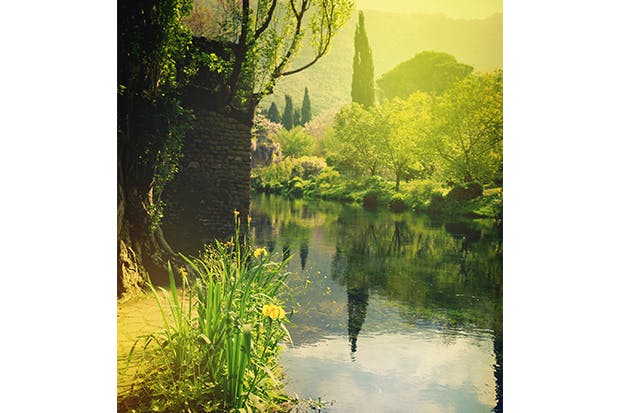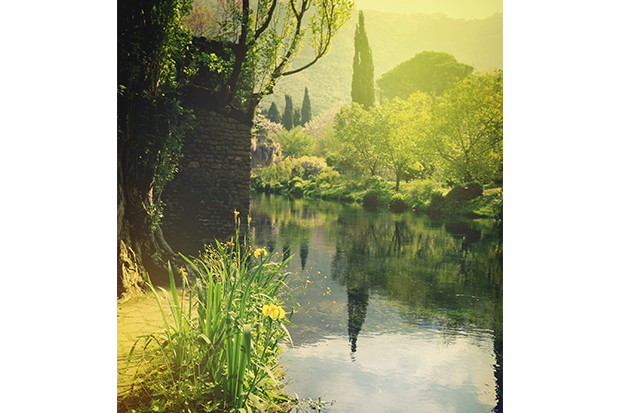I’ve just been given a personal tour of Ninfa by Monty Don. True, I had to share the thinking woman’s TV gardener with a number of others, but I’m convinced his attention was focused solely on me.
The occasion was a visit to three outstanding gardens outside Rome — Ninfa, Villa d’Este and Landriana — to celebrate a quarter-century of Gardeners’ World magazine in the company of its editor, Lucy Hall. Monty was an added inducement for the tour of Ninfa, after which he was to give a talk on the evolution of Italian gardens.
Rather like a gentleman’s club, Ninfa satisfies one’s inner snob. The eight–hectare garden, within 105 hectares of parkland 40 miles south-east of Rome, is open to the public for a handful of days each year. Thereafter visits are restricted to groups who book well in advance. Once inside the gardens, the official guide is God, and the route is fixed.
So what makes Ninfa worth the effort, especially now, a time of year when the garden is not, Monty assures us, at its best? Well, even though the celebrated roses have been and gone, and the one herbaceous border is nothing a Brit couldn’t muster, the structure of Ninfa stops the breath and has rightly won it the title of ‘most romantic garden in the world’.
The garden as we know it was created in 1921, but there has been an outpost at Ninfa since Roman times. The settlement had its share of disasters (its inhabitants succumbed to malaria in the 17th century), but in its heyday in the 12th century Ninfa had 150 houses, seven churches, a castle, a town hall, and several mills and bridges. Their ruins provide an incomparable structure.
Once inside, we are divided into two groups. Group A will go with Monty. I, of course, am in Group B with the local guide. We are assured we will swap leaders later: disappointment must be quelled, upper lips stiffened. And we rally, thanks to the charm both of the garden and our local guide. No serious gardener can sulk when confronted by a waterfall of Trachelospermum jasminoides tumbling down an ancient wall. Is that really amaryllis springing out of the ground? And over there, look at the hydrangea spilling out of the hollow of a fallen tree…
Ah, the trees! Poplars and cedars and maples and oaks. All seem venerable but it’s just a trick of the microclimate. The daddy is no more than 80. They have been fed and nurtured by natural springs and the river Ninfa, cradled by Monti Lepini, blessed by humidity. How can they fail to thrive?
Now it’s our turn for Monty, who sets off at a lick, flinging aside rope barriers with panache, leading his band of aficionados up proscribed slopes and into the best position to savour the vistas. He clearly loves this garden but we would do well to remember, he reminds us, that nothing in it has come about by chance. It is pure artifice. As with all gardens, nature has been tamed in order to render her more natural. Behind a hedge, the bindweed quietly chortles.
Got something to add? Join the discussion and comment below.
Get 10 issues for just $10
Subscribe to The Spectator Australia today for the next 10 magazine issues, plus full online access, for just $10.














Comments
Don't miss out
Join the conversation with other Spectator Australia readers. Subscribe to leave a comment.
SUBSCRIBEAlready a subscriber? Log in